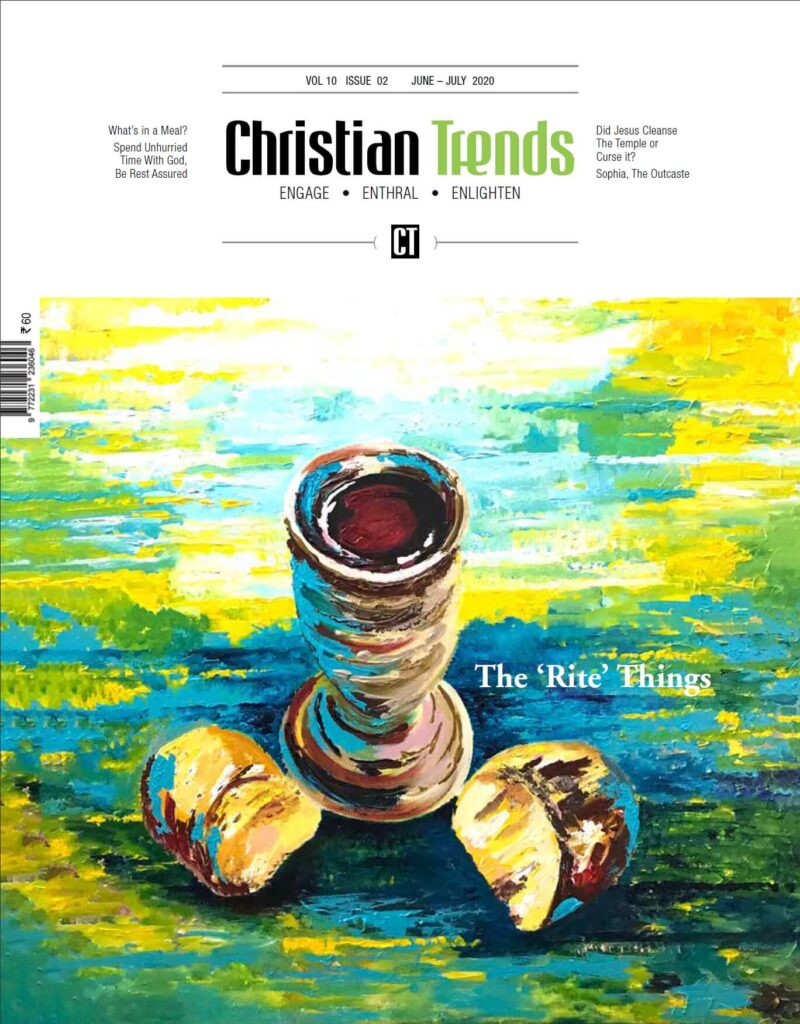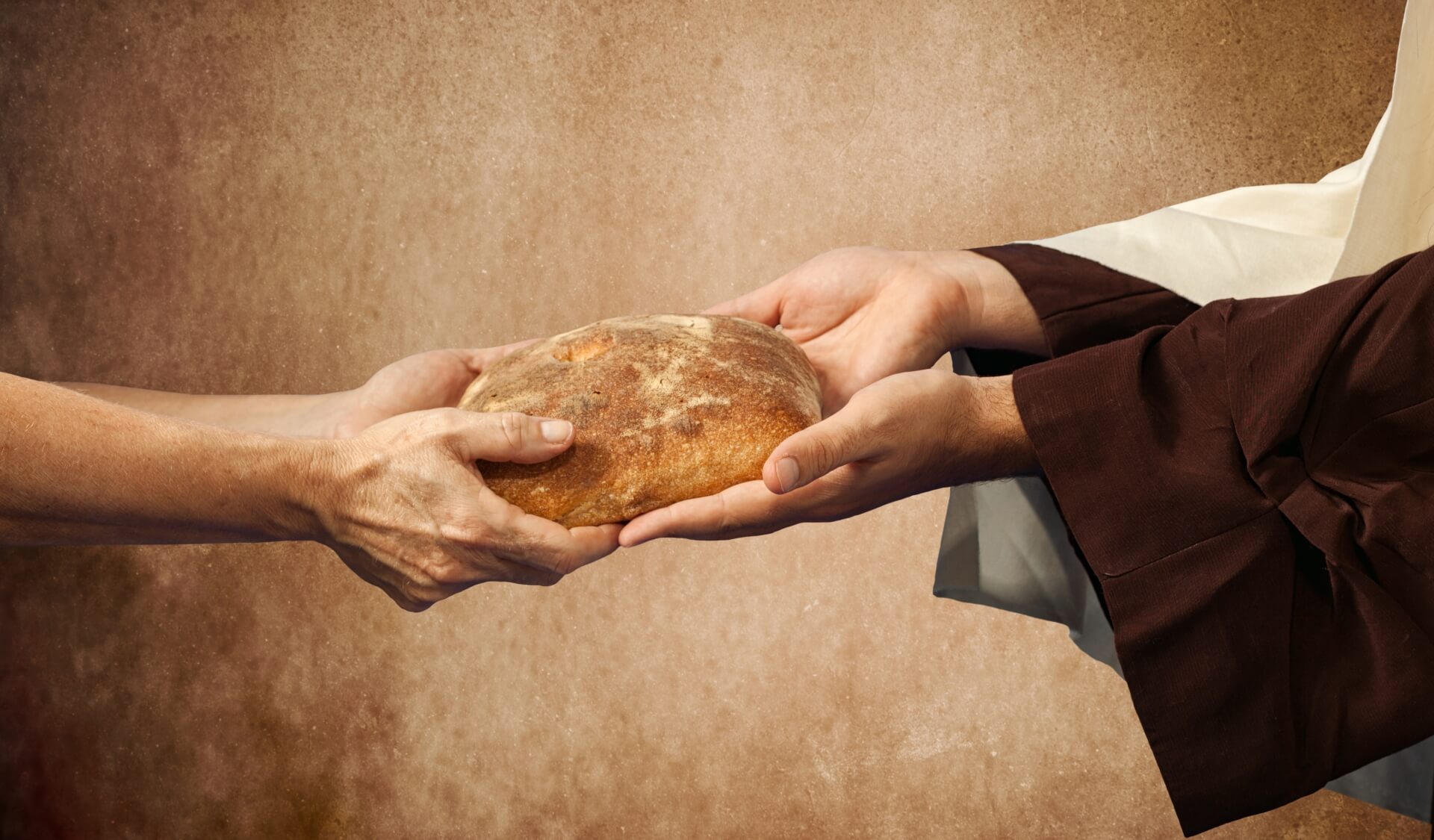A tick mark, the letter ‘M’ in bold, a bitten apple—ordinary, yet convey something more than their face value, don’t they? And, if mere sign was not enough, there is a string of words to go with it. An implied word association—the symbol and the tagline go hand in hand, impacting our decisions.
There is a reason why the logo of a brand is often strategically placed—where it is most visible. One look at the logo, and you estimate the respect and value the person wearing it deserves. These may be mere symbols, but are associated with sophistication and satisfaction.
When an officer salutes another officer, we conclude simply by their action who is superior of the two. The wedding band on someone’s finger communicates their marital status. The proximity between two individuals often communicates the nature of their relationship.
On the platter is unleavened bread, a bitter herb, a piece of vegetable dipped in salty water, a Passover lamb and four cups of wine.
Symbols, signs, practices and traditions are languages we use to both communicate and interpret the world. Religion and rituals are more often than not categorised into one. Some rituals have meaning to it, but some have been a part of culture for long enough to become a way of life for no particular reason.
However, it is not the case with a Jew, and should not be with a Christian either. To a Jew, religious practices/traditions mark their every day, weekly and annual lives. Historically, the Jewish celebration of feasts and holidays were more than ritualistic customs—these were essential means to understand their roots, story and identity. Each feast of the Jews was indicative of actual historical events. The crown jewel of the Jewish calendar was the Passover. The Passover festival to a Jew was both remembering as well as participating in the foundational story of liberation from slavery.
A Jewish Passover platter contains various elements; each part telling a story. On the platter is unleavened bread, a bitter herb, a piece of vegetable dipped in salty water, a Passover lamb and four cups of wine.
The unleavened bread (a hurriedly baked bread with no yeast) signified the preparedness and the hasty departure of the Israelites from Egypt. The vegetable dipped in salty water indicating the coat of Joseph that was smeared with blood to cover up the truth about him being sold to Egypt. The bitter herb was both a participation and remembrance of their bitter past of slavery; the lamb indicated the Passover lamb that was slaughtered and whose blood was smeared on the doorpost that covered them from the judgement of God. The ritual consisted of blessing God, singing psalms and hand-washing before and after meals.
The Passover elements that were to indicate the ancient history of the Israelites were used by Jesus to indicate what is to come.
It is the same Passover of the Jews that Jesus and his disciples celebrate in wee hours before the betrayal and arrest of Jesus. The Passover meal of Jesus, also known as the Last Supper is the pivotal crossover of an ancient meal into a grander meaning. The Passover with Jesus was like no other Passover that the disciples would have grown around. Jesus was enacting a Passover meal transforming the meaning of the meal before them. The Passover elements that were to indicate the ancient history of the Israelites were used by Jesus to indicate what is to come.
At the crux of eternity past and eternity to come, Jesus enacts a meal that would be the highest revelation of God’s purposes.
Luke 22 records for us the Passover of Jesus and his disciples. Jesus takes the first of the four cups of the Passover, gives thanks to God commencing the meal (v.17). He then takes the unleavened bread, and breaks it, signifying his soon-approaching crucifixion and death (v.19), following which they have Passover lamb that was slaughtered, signifying the unblemished lamb of God to be slaughtered, after the meal Jesus takes another (3rd of the 4th cup) cup, gives thanks and declares that it was his blood poured out for a new covenant (v.20).
Jesus uses the same storyline of slavery and redirects our attention to the greater slavery of mankind, the slavery to sin. Jesus swaps his place with the lamb and bread and offers a New Exodus through him alone.
A Meal Like No Other
The Last supper is the greatest story that could ever be told. Jesus institutes the meal to both remember and participate in the ‘new’ exodus. The symbols are seldom symbols when what they signify is a magnificent truth that is captured for us in tangible elements.
Christ, our Passover Lamb, ought to mark the calendar of our lives. Christ has prepared us a table and he invites us as often as we come. It is no ordinary meal, it tells us the foundational story of who we are, who we belong to and who our hope is in.
Tevye, a Jewish protagonist in the movie Fiddler on the Roof who desperately tries to keep traditions in place, says: “because of our traditions… Every one of us knows who he is and what God expects him to do.”







